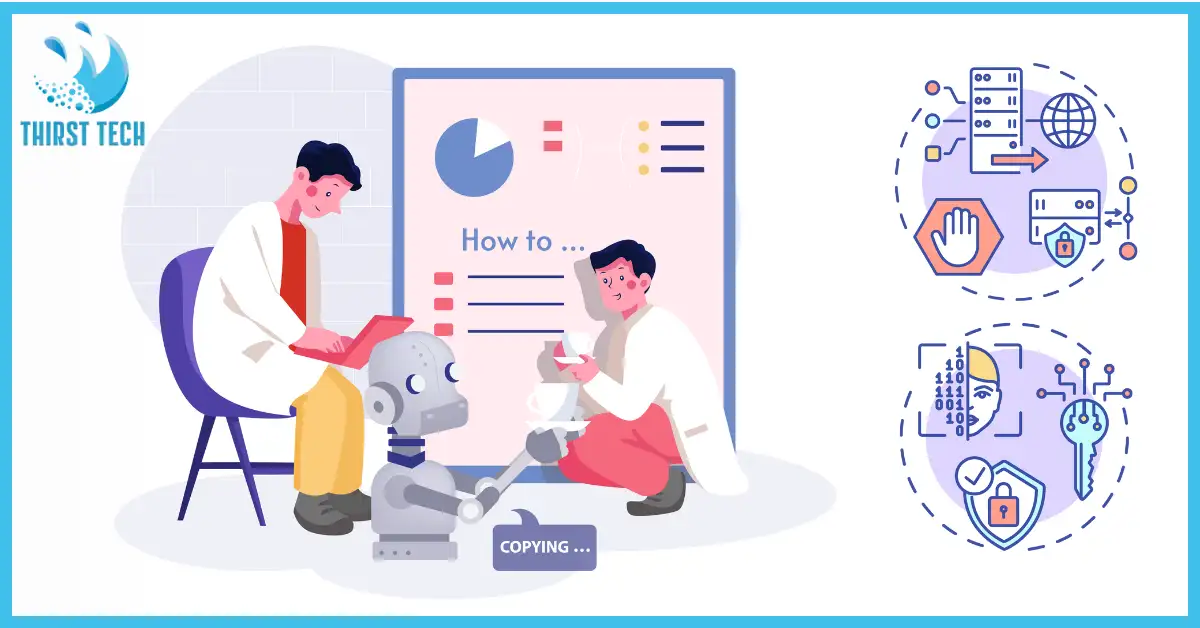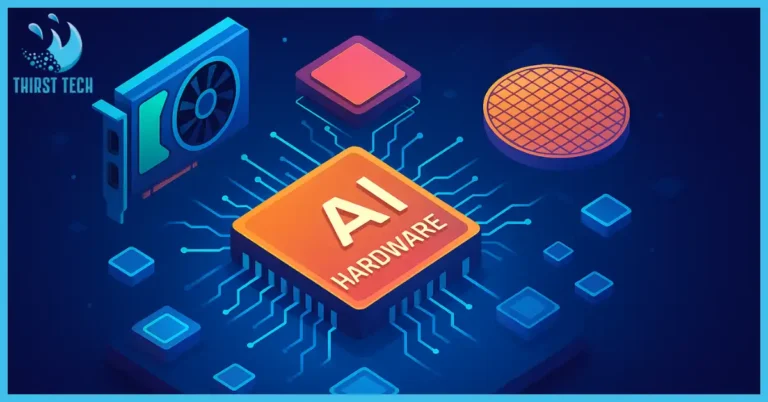What is the Role of AI in Cybersecurity: Smart Defense
Cybersecurity also became a foundation for businesses and the public as digital threats grew bigger and more complex. If you want to stay safe, learn how artificial intelligence in cybersecurity is a game-changer.
The objective of this article is to provide a deep dive into the Role of AI in Cybersecurity. We hope to use this content to inform cybersecurity professionals, security analysts, and IT decision-makers of the key upside and a few potential downsides to adopting AI-enabled solutions through the critical building blocks being so threat detection AI, and machine learning security.
A Roadmap to How AI is Going to Change Cybersecurity
What is AI in Cybersecurity?
In simple words, Artificial Intelligence in cybersecurity can be described as the use of complex algorithms and machine learning applications on large volumes of data to identify anomalies and take action against the resulting Security Events. The role of AI in cybersecurity goes beyond automation; it enriches decision-making, expedites threat identification, and evolves the security domain into a proactive, smart environment.
🔗 Related Post
Learn how AI Agents function in 2025, from decision-making models to automation, revolutionizing industries with smart adaptability.
The Difference Between Traditional and AI Security
Traditional cybersecurity predominantly uses static, signature-based methods and manual intervention. On the other hand, Artificial Intelligence-based solutions use machine learning security methods to react to new attacks by observing patterns in data. This dynamic approach enhances the ability to detect cyber threats before they can do harm.
Key differences include:
- Real-Time Analysis: AI systems can analyze massive amounts of data in real-time, reducing the time required to identify potential threats and neutralize them.
- Flexible: Unlike conventional methods, AI-driven cybersecurity can keep on learning and adapting, making it a lot tougher against growing hazards.
- Automation: AI in IT security is used to automate a few common tasks, such as monitoring traffic on the network, identifying whether there are any vulnerable servers, and hiding your information from those scanning for vulnerabilities, among others, freeing up more time for the security professional to focus on complex threats.
AI in IT Security Explained
Using algorithms that receive and analyze data from multiple points, integrating Artificial Intelligence into IT security. These algorithms help cybersecurity systems detect patterns, analyze suspicious activities, and automatically respond to threats. In addition to improving threat detection AI, this approach also simplifies the entire security management process.
🔗 Related Post
Discover What Generative AI still cannot do?, from lacking true creativity to missing human empathy in decision-making.
Utilizing Artificial Intelligence for Improved Threat Detection
Enhancing Cyber Threat Detection
Thus, AI is one of the major domains that involves increasing cyber threat detection. AI-enabled systems can monitor activity on your network and help you identify cyber threats by noticing abnormal behavior that traditional systems may overlook, thereby reducing the sophistication of cyberattacks.
Key Mechanisms Include:
- Pattern Recognition: AI systems recognize patterns of normal behavior and flag deviations from these patterns to provide early alerts on potential intrusions.
- Anomaly Detection: AI utilizes machine learning to identify unusual behaviors that could signal a security threat.
- Real-Time Analysis: AI can analyze data streams in real time, meaning threats are detected and addressed almost instantaneously.

Using AI in Cybersecurity Defense Applications
Smart Technology-based tools have broad applications in the field of cybersecurity. These are automated threat intelligence collection, live incident remediation, and cybersecurity tools integration. Security teams may have actionable insights at their disposal by falling back on AI-powered cybersecurity tools that can rapidly correlate data from a wide range of sources.
Traditional Cybersecurity vs AI-Powered Cybersecurity
| Feature | Traditional Security | AI-Powered Cybersecurity |
|---|---|---|
| Threat Detection | Signature-based, slower | Pattern recognition, real-time, dynamic |
| Data Analysis | Manual analysis, time-consuming | Automated, analyzes vast amounts of data instantly |
| Adaptability | Static defenses | Continuously learning and evolving |
| Incident Response | Reactive, delayed | Proactive and automated |
| Integration | Isolated tools | Seamless integration with IT security systems |
This table illustrates how Artificial Intelligence can enhance key areas, making it an indispensable asset in the modern cybersecurity arsenal.
Case Studies and Real-Life Examples
The implementation of AI in cybersecurity has already become rewarding for organizations across sectors. An archetypal example of this is threat detection “AI” that some companies use to analyze network traffic in real-time, identifying and neutralizing cyberattacks before they inflict material harm.
These examples highlight how AI is not just a way to speed up response times but also a way to improve overall security strategy.
🔗 Related Post
Explore how AI is Transforming Mental Health Care through early diagnosis, personalized treatments, and predictive analytics using machine learning and NLP.
Advantages and Disadvantages of Integrating AI
The Importance of AI in Cybersecurity
There are numerous benefits of implementing AI in cybersecurity defenses:
- Advanced Threat Detection: AI in the machine learning security features analyzes patterns to identify potential threats that might be missed by traditional systems.
- Improved Incident Response: AI systems allow for real-time monitoring and automated responses to mitigate the effects of cyberattacks.
- Data-Driven Insights: AI sifts through massive data sets to deliver actionable insights in a way that supports evidence-based decision-making.
- Cost Efficiency: Automating repetitive tasks allows organizations to make the best use of their resources, optimizing security operations.
- Strengthened Security Posture: The combination of AI technology with standard cybersecurity measures significantly enhances defenses against contemporary threats.
In the table above, you will find some of the advantages specified to the AI solutions in comparison with the traditional methods.
🔗 Related Post
Dive into How AI Models are Built and Trained, from neural networks to transformers—perfect for both beginners and seasoned developers.
Prospective Risks and Boundaries
Despite their numerous advantages, there are important caveats to using AI for cybersecurity:
- False Alarms: AI systems can be prone to false alarms, where they mistakenly identify normal activities as threats, which can lead to unnecessary alerts. False Negatives: AI systems may miss actual threats, leaving organizations vulnerable to attacks.
- Over-Reliance on Automation: An overreliance on AI in decision-making processes can lead to a lack of human oversight, which can provide room for advanced attacks to go undetected.
- Bias in AI: AI systems are often trained on biased datasets, leading to biased or biased outputs.
- AI integration Challenges: AI integration into established cybersecurity measures can be difficult and often requires domain expertise.
How to Balance AI with Human Expertise
However, when fine-tuning AI in cybersecurity, space must be made for the input of human security experts. However, humans still have a role to play in threat detection and response, as the intuition and experience that comes from training on detection and response will never be fully automatable. Team—Automated systems, human oversight should coexist in harmony, AI should play a role in augmenting these teams and take its place as a force multiplier.
🔗 Related Post
Explore Algorithmic Bias in AI – its causes, real-world effects, and solutions for building fairer AI systems.
The Future Role of AI in Cybersecurity
Trends and Innovations Summary
Emerging trends are promising to further integrate AI into security strategies, as the future looks to be even more dynamic for cybersecurity. Generation AI and advanced Artificial Intelligence algorithms to change the landscape of threat detection and response. These innovations will allow systems to learn with fewer data points, make more accurate predictions, and dynamically upskill with new approaches to cyber threats.
A Landscape of Evolving Cybersecurity Strategies
With organizations opening up to AI-powered tools, cybersecurity strategies have swiftly started to evolve. Future solutions will probably combine AI in cybersecurity and the old methodology into a single integrated defense mechanism. With machine learning security, prevention will be taken a step further in 2023, with organizations being able to study criminals’ behaviours, helping them develop defenses in advance.
Adoption Best Practices
In order to fully capitalize on the role of AI in cybersecurity, organizations should follow these best practices:
- Enhance Training: Ensure sound education around Smart Technologies and their use in the cybersecurity domain for security professionals.
- Implement Layered Security: Use AI-powered devices along with other security measures to build a layered defense.
- Regularly Update Systems: Ensuring AI algorithms are up to date so they are able to identify and respond to the most recent threats
- Prioritize Data Quality: For threat detection AI and machine learning security, high-quality, diverse data sets are a requirement.
By adapting these practices, organizations can not only enhance their AI in IT security but also build a strong wall to defend themselves from ever-evolving cyber threats.
🔗 Related Post
Learn how AI is reshaping Transportation and Logistics through smarter routing, predictive analytics, and next-gen supply chain automation.
Conclusion – Role of AI in Cybersecurity
The most important question in cybersecurity & AI. Fast forward to today, and AI is more crucial than ever before in the realm of cybersecurity as it enables organizations to quickly identify threats, mitigate proactively, and safeguard mission-critical data assets. The synergistic combination of human insight and advanced artificial intelligence solutions will shape the future of cybersecurity as the digital world expands.
To counter those cybercriminals, organizations need to leverage AI-based tools and techniques. With AI at the controls, cybersecurity measures can be transitioned from reactive approaches to proactive, intelligent methods. The bright and resilient future of cybersecurity will be smart, dynamic, and AI-aided, signaling an age in which technology and human expertise join hands.
FAQs
How is generative AI useful in cybersecurity?
From analyzing patterns in vast data sets, generative AI can replicate potential attack scenarios and forecast vulnerabilities. That not only arms the threat detection AI, but it also aids incident response in the more traditional sense.
Is AI going to take over human roles in cybersecurity?
AIs are there to augment, not substitute, for human expertise. AI makes responses more efficient and automates repeating tasks, but human analysts are needed to inform strategic decisions, and the complexities of advanced threats require the human element.
How common is AI getting used in cybersecurity?
Major use cases are real-time threat detection, automated incident response, integration with existing cybersecurity tools, and monitoring of network activities on a continuous basis. These applications use machine learning security to dynamically adjust to new threats.
How does AI fit in with traditional cybersecurity measures?
AI can help facilitate the automated analysis of large volumes of data, which can lead to the rapid identification and response to threats that would be difficult for humans to handle alone, but human insight and oversight are still the last line of defense against complex and nuanced threats. It also enhances the overall security posture by inserting prevention into the response architecture, meaning organisations can not only respond to and protect against attacks, but also provide the best response to threats.
Sources









